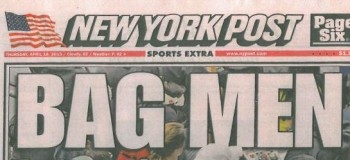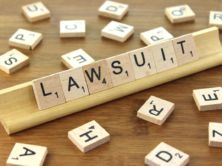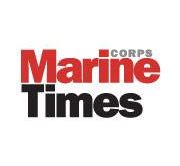
A detail of the New York Post's front page April 18. (Credit: NYPost via Poynter)
Two individuals who the New York Post falsely suggested to be possible suspects in the Boston Marathon bombings filed a defamation lawsuit against the newspaper and six of its reporters on June 5, the Boston Globe reported.
iMediaEthics asked the FBI June 24 if it released photos of Salaheddin Barhoum and Yassine Zaimi, who are now suing the Post for defamation. Greg Comcowich answered that despite Rupert Murdoch’s tweet that “All NYPost pics were those distributed by FBI,” the only pictures that the FBI released to the public were of “Suspect #1 and Suspect #2,” who turned out to be Dzhokhar and Tamerlan Tsarnaev. Murdoch is CEO of Post parent company News Corp.
Special Agent Greg Comcowich, Media Coordinator for the Boston Division of the FBI, told iMediaEthics by phone:
“The only official photos that the FBI released to the public were of the suspects that we called then ‘Suspect #1 and Suspect #2.”
“They never got it right”
The cause of the legal action is the New York Post’s April 18 front-page publication of a picture of Salaheddin Barhoum, 16, and Yassine Zaimi, 24, standing at the April 15 Boston Marathon. The picture was titled “Bag Men.”
The caption for the photo on the Internet article, in which Barhoum and Zaimi are circled in red, claims, “Cops are seeking these two men (above) who were spotted near the site of the Boston blasts.”
iMediaEthics spoke with C. William Barrett, the attorney representing Zaimi, to find out the details of the case.
“They never got it right,” Barrett told iMediaEthics in relation to the Post’s original articles and their ensuing updates on the two men’s status with regard to the attacks. “They still haven’t got it right.”

The April 18 New York Post front page, claiming that the two men were being pursued by authorities (Credit: NYPost, via Poynter, screenshot)
Barrett told iMediaEthics that the New York Post did not verify its accusation with Zaimi or Barhoum prior to publishing the picture on April 18. The Post published the photo before authorities had authorized or publicly released any photographs of persons of interest.
Even though the Post article accompanying the front-page photo claimed investigators were “circulating photos of two men spotted chatting near the packed finish line,” the photo was not among those eventually released.
The New York Post also ran an online version of the article, which Barrett noted in his interview with iMediaEthics is still published on the Post’s website. Amazingly, the image that the Post now knows to be casting false light on these individuals still remains online.

The image still remains online, perpetuating the false accusations against Barhoum and Zaimi, the lawsuit charges.
The same day as the Post’s report, the FBI released pictures and video footage of Dzhokhar and Tamerlan Tsarnaev, who weren’t identified at the time, but were soon named as suspects in the bombings.
The FBI warned the media
The Boston division of the FBI issued a press release April 17, calling out media coverage of the investigation into the bombings. This statement was issued in light of the various media mistakes in reporting on the attack. The Bureau flagged “press reports based on information from unofficial sources that has been inaccurate.”
“We ask the media, particularly at this early stage of the investigation, to exercise caution and attempt to verify information through appropriate official channels before reporting.”
iMediaEthics spoke with Comcowich, Media Coordinator for the Boston Division of the FBI, about the unverified claims published by the media in the days after the attacks.
“It was a very, very large problem, and it was harmful to what was occurring, both as a democracy, and as an investigation,” Comcowich said.

The official photos released by the FBI of their suspects. (Credit: FBI, screenshot)
A few hours after the online article was published, the New York Post linked to an updated article that read, “Two men probed in Boston Marathon bombings cleared by investigators.” But the two men were never publicly identified as persons of interest in the first place.
The Post–still–has not scrubbed or corrected its statements in the original article that authorities were pursuing Barhoum and Zaimi in connection with the attacks.
“All they did was stick a small line in,” Barrett, Zaimi’s lawyer in the suit against the Post told iMediaEthics in relation to the link to the updated article.
“UPDATE: Two men probed in Boston Marathon bombings cleared by investigators,” the link reads.
Lawsuit Claims Defamation, Emotional Distress
The lawsuit, which was filed with the Suffolk Superior Court on June 5 and posted online by The Washington Post, makes separate claims of defamation/libel per se for the picture and text on the front page and accompanying articles in print and online. Barhoum and Zaimi are also suing for emotional distress and invasion of privacy.
Barrett, Zaimi’s lawyer, said in a June 12 interview with iMediaEthics that he expects the lawsuit to be served to the New York Post “very soon.”
In his interview with iMediaEthics, Barrett deemed the statements regarding the two men being “cleared” by authorities as also libelous and untrue, as Barhoum and Zaimi were never considered suspects.
“The Post had no basis whatsoever to suggest that they were [suspects], especially in light of a warning on Wednesday [April 17] to news media, by federal authorities, to exercise caution in reporting about this very matter,” the lawsuit says.
“How can you clear someone who has never been charged with anything, who was never even a suspect in anything, who has never even been approached by the feds?” Barrett told iMediaEthics.
Further, the complaint alleges that Barhoum and Zaimi left the Marathon at approximately 12:45 p.m. that day, and the bombs were detonated at 2:49 p.m. They only learned of the bombings later that afternoon after viewing television coverage of the event.
When iMediaEthics emailed the New York Post for comment, spokesperson Suzanne Halpin answered, “I would refer you to the NY Post statement of April 18th.”
Post editor Col Allan defended the publication of the photo, as iMediaEthics wrote in an earlier report. Allan wrote in a statement that the paper never called them “suspects.”
A Legal Perspective–the key issues
iMediaEthics spoke with an intellectual property lawyer to find out the possible challenges faced by the defendants.
Alan Behr, a journalist and an attorney who practices intellectual-property law, explained to iMediaEthics by email what he sees as the key issues.
Since the the two men weren’t public figures, there’s a “lighter standard” to prove that they were victims of libel, the partner at New York-based law firm Phillips Nizer LLP explained.
However, this doesn’t necessarily mean that Barhoum and Zaimi will have an easy time proving their case.
“The free press, in short, gets a pass, despite the many blunders, biased spins and general foolishness that sometimes gets into print or onto backlighted screens,” Behr said. “A fair number of cases are therefore disposed of by preliminary motion, such as a motion to dismiss.”
An additional issue that may prevent Zaimi and Barhoum from a successful case is that the Post did not directly state that authorities were pursuing them but merely implied that they were, according to Behr.
Further, Behr noted that the Post’s update on the story that stated the pair was not sought by investigators could be “considered a correction of the record, however oblique.”
“That arguably amounts to shoddy journalism,” Behr continued, “But there is a big difference between bad craftsmanship or gratuitous rabble rousing and the making of an untrue statement that is actionable as libel,” Behr wrote.
“If the plaintiffs overcome the hurdles they face in proving their case, they would next have to demonstrate that the result was damage to their reputations or show that the case fits within the narrow range of those cases for which the published material is deemed so offensive, proof of special damages is not necessary.”
As a possible defense, Behr said that the Post could cite any emails and text messages that “went back and forth with law enforcement” before the image was published.
Behr concluded, “It will therefore be interesting to see how counsel for plaintiffs intend to manage this case, given the challenges that appear to manifest themselves at the outset.”
iMediaEthics has reached out to Max D. Stern, the attorney representing Barhoum’s father (who is bringing the lawsuit on his son’s behalf), but we have not received a response.
UPDATE: 6/24/2013 11:32 AM EST: Changed headline.
UPDATE: 6/24/2013 4:14 PM EST: Added information from an interview with Comcowich.






